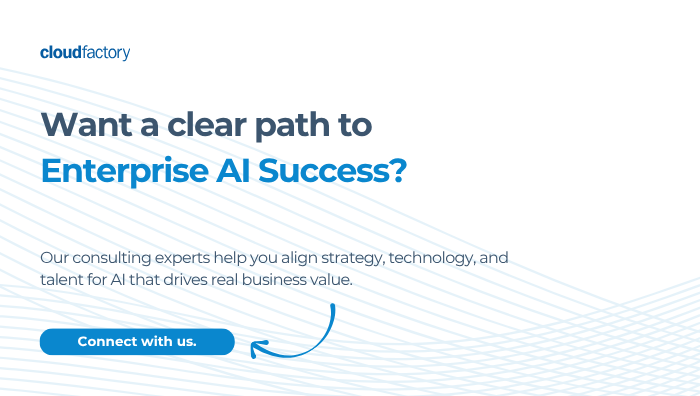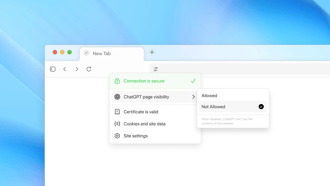Enterprise AI models often suffer from a fatal flaw: they become outdated quickly. Market conditions shift, user behavior evolves, and a model that performed flawlessly last quarter can suddenly lose accuracy and relevance. The result? Slower decision-making, missed opportunities, and competitive disadvantage.
Reinforced Learning through Expert Feedback (RLEF) offers a way forward. By integrating domain experts directly into the AI’s feedback loop, enterprises can create adaptive systems that continuously learn from real-world signals. The payoff is significant—greater accuracy, faster adaptation, lower operational costs, and sustained competitive edge.
What We Mean by RLEF
It’s worth clarifying: “RLEF” has been used to describe several different AI concepts. Here, we’re focused on Reinforced Learning through Expert Feedback, which is similar to RLHF (Reinforcement Learning with Human Feedback) but with one critical distinction: the “humans” are trained domain experts, not general annotators.
Other interpretations of RLEF exist, including:
- Reinforcement Learning for Edge Frameworks – Optimizing AI at the edge for speed and efficiency.
- Representation Learning and Embedding Frameworks – Improving feature representation for deep learning models.
- Risk-Limited Evaluation Frameworks – Ensuring compliance and safety in regulated environments.
- Reward Learning and Exploration Functions – Balancing reward and exploration in reinforcement learning.
Our focus—expert feedback—goes beyond standard training by ensuring that AI models are shaped by the most relevant, high-quality input possible.
The Core Principles of RLEF
RLEF is built on three core components:
- Environmental Signals – Real-world data streams such as user interactions, operational metrics, and sensor readings.
- Continuous Feedback Loops – Real-time evaluation that captures the model’s performance in live conditions.
- Adaptive Learning – Algorithmic updates that apply feedback immediately to improve predictions and decision-making.
Unlike static AI models, which are trained once and then periodically updated, RLEF keeps the learning process alive, allowing models to adapt in days—or even minutes—rather than months.
Why Enterprises Are Turning to RLEF
Enterprises are increasingly recognizing that static AI models—no matter how advanced at launch—begin to degrade the moment they enter production. The pace of change in customer expectations, market dynamics, and operational environments means that a model’s training data is quickly outdated. In industries like finance, retail, or healthcare, this “model drift” isn’t just an inconvenience; it can lead to poor decisions, regulatory risk, and lost revenue. Organizations that once relied on quarterly or annual retraining cycles are finding those approaches too slow to keep up with reality.
RLEF addresses this problem by embedding adaptability directly into the AI’s learning process. Instead of passively waiting for a scheduled retraining session, models actively learn from environmental signals—such as transaction data, sensor readings, or user interactions—as they happen. When paired with expert human feedback, this creates a high-fidelity learning loop where the AI refines itself based on the most relevant and accurate information available. For example, in fraud detection, RLEF allows systems to identify and respond to new scam patterns in days rather than weeks, reducing exposure and strengthening customer trust.
The appeal of RLEF extends beyond pure performance gains. Enterprises see it as a way to preserve competitive advantage in markets where differentiation often comes down to responsiveness. In e-commerce, recommendation engines using RLEF can quickly adapt to emerging trends, seasonality shifts, or supply chain constraints—ensuring customers always see the most relevant products. In healthcare, diagnostic models can integrate the latest clinical findings and expert input to improve patient outcomes without waiting for lengthy approval cycles.
Another driver of adoption is that RLEF naturally aligns with modern AI governance practices. By incorporating domain experts into the feedback loop, enterprises not only improve accuracy but also increase explainability and accountability—critical factors in regulated sectors. This blend of adaptability, human oversight, and measurable business outcomes is why more enterprises are shifting their AI strategies toward RLEF-based approaches. It’s not just about making AI smarter; it’s about making it sustainably intelligent in an environment where change is constant.
Helping Hummingbird Deliver Insights To Farmers
Hummingbird Technologies, a leader in agricultural AI, needed to analyze aerial imagery to deliver actionable insights for farmers. Traditional annotation approaches weren’t cutting it—the variability in crop types, growth stages, and environmental factors demanded precise, context-rich feedback.
CloudFactory partnered with Hummingbird to bring expert-level annotation into the process. We trained our annotation teams to perform specialist-level analysis of complex aerial images—identifying subtle crop health indicators, distinguishing weeds from crops, and detecting patterns invisible to non-experts.
By applying RLEF principles—continuous environmental feedback paired with expert review—Hummingbird’s AI models improved their detection accuracy and reduced the time from data capture to actionable insight. The result was faster decision-making for farmers, better yield predictions, and a stronger competitive position in the agricultural AI market.
This is exactly what RLEF can do for other enterprises: pair advanced algorithms with domain expertise to create models that learn faster, adapt better, and deliver more value over time.
The Benefits of RLEF in Enterprise AI
When implemented effectively, RLEF delivers a suite of business benefits that go far beyond simple accuracy improvements.
First, accuracy gains compound over time. Continuous improvement means that models don't just "snap back" to relevance after retraining—they stay aligned with real-world conditions. In many cases, organizations see accuracy improvements in the double digits compared to their static counterparts, and those gains are sustained because the model is always learning. For example, a customer support chatbot using RLEF can refine its responses based on expert-reviewed interactions, leading to fewer escalations and higher customer satisfaction scores month over month. However, it's important to note that experts training the reward model can create persistence between retraining loops, which requires careful monitoring to ensure the system continues adapting to new conditions rather than reinforcing outdated patterns.
Second, operational efficiency improves. Manual retraining cycles are expensive, disruptive, and slow. With RLEF, much of the heavy lifting is handled by the continuous feedback loop, meaning engineering teams spend less time on labor-intensive updates and more time on strategic improvements. This efficiency translates into cost savings across data science, infrastructure, and support functions.
Third, time-to-value shortens dramatically. Traditional AI deployments require lengthy post-launch monitoring before any meaningful gains are realized. With RLEF, models can begin improving within hours of going live, giving teams a faster return on investment and allowing them to respond more quickly to emerging opportunities or threats.
Finally, user experiences improve in ways that drive measurable business impact. Personalized recommendations, accurate predictions, and context-aware automation make systems feel more intuitive and trustworthy to end users. In competitive markets, this heightened relevance can be the deciding factor in customer retention and revenue growth.
The Challenges and How to Overcome Them
While RLEF offers clear benefits, it’s not a plug-and-play solution. The path to successful adoption requires addressing several real-world challenges.
The first hurdle is ensuring feedback quality. Not all feedback is created equal, and bad data can mislead models as easily as good data can guide them. In regulated or high-security environments, sourcing timely and relevant feedback without compromising compliance adds another layer of complexity. The solution here is twofold: carefully selecting domain experts who understand both the subject matter and the model’s context, and implementing robust quality assurance processes to validate every piece of feedback before it’s used.
Another challenge is balancing exploration and exploitation. AI systems that explore too much may waste time and resources chasing low-value paths, while those that exploit existing strategies too heavily risk stagnation. Enterprises must tune their models to strike the right balance, often by setting clear thresholds for acceptable risk and reward. Expert oversight helps maintain this balance, ensuring that exploratory learning remains productive and that exploitation strategies don’t drift into irrelevance.
Compliance and governance can also slow adoption, especially in industries like finance, healthcare, or defense. Here, transparency is key—documenting feedback processes, maintaining audit trails, and ensuring explainability in model decisions help meet regulatory requirements while still enabling agility.
Lastly, infrastructure must be ready to support continuous learning. RLEF requires robust data pipelines, scalable compute resources, and integration between feedback systems and model training environments. Without this foundation, the feedback loop can break down, delaying improvements and eroding trust in the AI system. The fix often involves a phased rollout—starting with smaller, lower-risk models to refine the pipeline before scaling to enterprise-wide use.
How CloudFactory Enables RLEF Success
CloudFactory specializes in providing that expert human feedback at scale. Our model for supporting RLEF includes:
- Targeted Review Technology – Intelligent systems that direct expert attention to the most impactful data, ensuring every review accelerates model performance.
- Expert Human Feedback – Domain-trained teams ready to deliver structured, high-quality feedback when clients choose to leverage our workforce.
- Scalable AI Platforms – Infrastructure for rapid, high-volume annotation with seamless integration into existing workflows.
- Quality Assurance – Rigorous processes to maintain accuracy, consistency, and reliability of environmental signals.
We’ve helped clients across industries compress their adaptation cycles, reduce resource costs, and unlock new competitive advantages.
RLEF represents the future of enterprise AI—models that aren’t just trained, but continually learning from expert-guided, real-world feedback. If your AI is losing accuracy or relevance over time, RLEF can transform it into an adaptive, always-current system.
Ready to leverage RLEF for your enterprise AI initiatives? Book a meeting to discuss CloudFactory’s AI solutions today.
.png?width=1563&height=1563&name=Untitled%20design%20(38).png)




.png?width=1563&height=1563&name=Untitled%20design%20(30).png)



.png?width=1563&height=1563&name=Untitled%20design%20(33).png)


.png?width=1563&height=1563&name=Untitled%20design%20(34).png)














